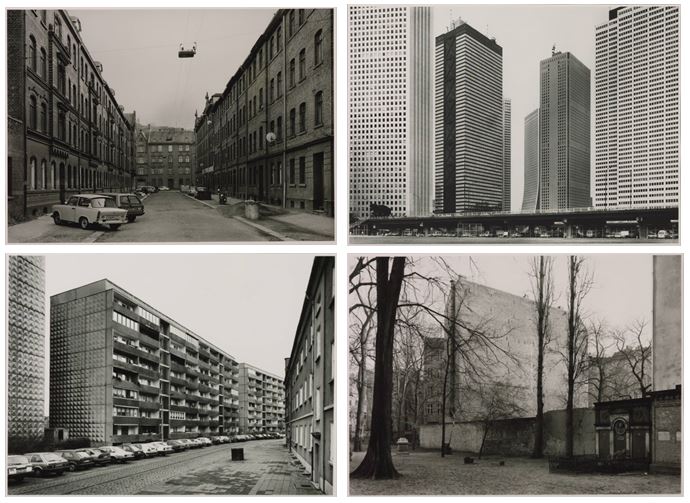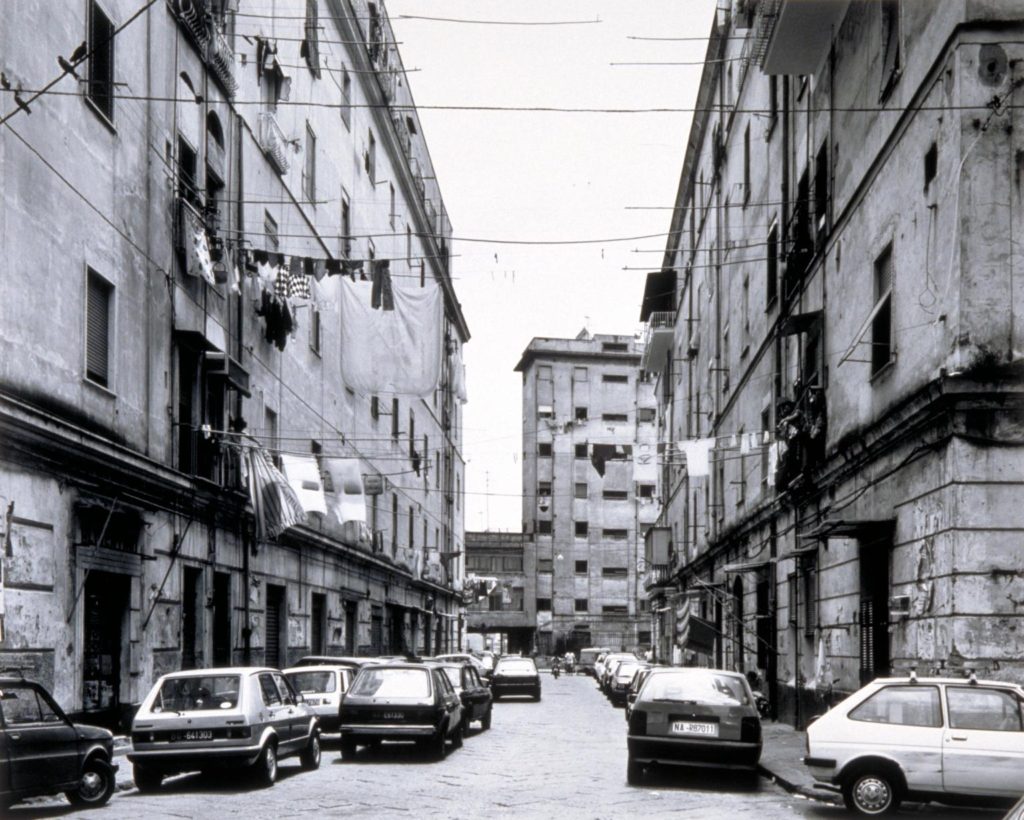Thomas Struth began taking photographs of industrialised cities when he was studying under Bernd Becher (born 1931) at the Düsseldorf Academy. He has continued to explore and develop the theme for almost twenty years, focusing his attention on such cities as New York, Tokyo, Berlin and Naples. Struth’s images of the urban environment concentrate on seemingly unspectacular streets and public spaces. He seeks to record the face of urban space, seeing the architectural environment as a site where a community expresses its history.



This photo is taken in Via Giovanni Tappia, Naples 1989. Struth focuses his camera on the Neapolitan cityscape where he places the camera in the middle of the street at eye level. This creates a one-point perspective that leads the viewer’s eye down the street. It also results in the road being as much the focus of the scene as the apartment buildings on either side. There are few signs of the lives of the inhabitant, leaving no trace of their presence. Struth presents an image of a slightly scruffy, inner-city residential street which is filled with traces of activity and domestic life. This suggest that his images can be read as exploring differences in national character through the way urban space is inhabited.
In recording the urban environment, Struth deliberately refers to the tradition of black and white documentary photography, adopting a seemingly objective position. The compositions are simple and the photographs are neither staged nor digitally manipulated in post-production. However, in spite of a link to the reportage tradition, Struth avoids both its snapshot approach and its quest for the capture of a fleeting, spontaneous image. Rather he carefully selects the sites where, using long exposures he makes sharply focused images.

Shinju-ku, (TDK), Tokyo 1986
Struth focuses on a busy intersection in urban Tokyo. He has taken the photograph from the middle of the road, pointing the camera down the street. As a result the spectator’s eye is drawn into the image and invited to inspect the architectural environment. The technique is one which Struth has employed in many of the street scenes since the late 1970s. However, unlike many similarly constructed images, the Tokyo photograph is not deserted. It is rather filled with people and movement, presenting an image of chaotic urban activity. The city that Struth presents is unregimented: there is little architectural unity. Because so much activity is included in the image, Struth is able to evoke the dynamic energy, speed and frenetic temporality characteristic of contemporary Japanese urban culture.
